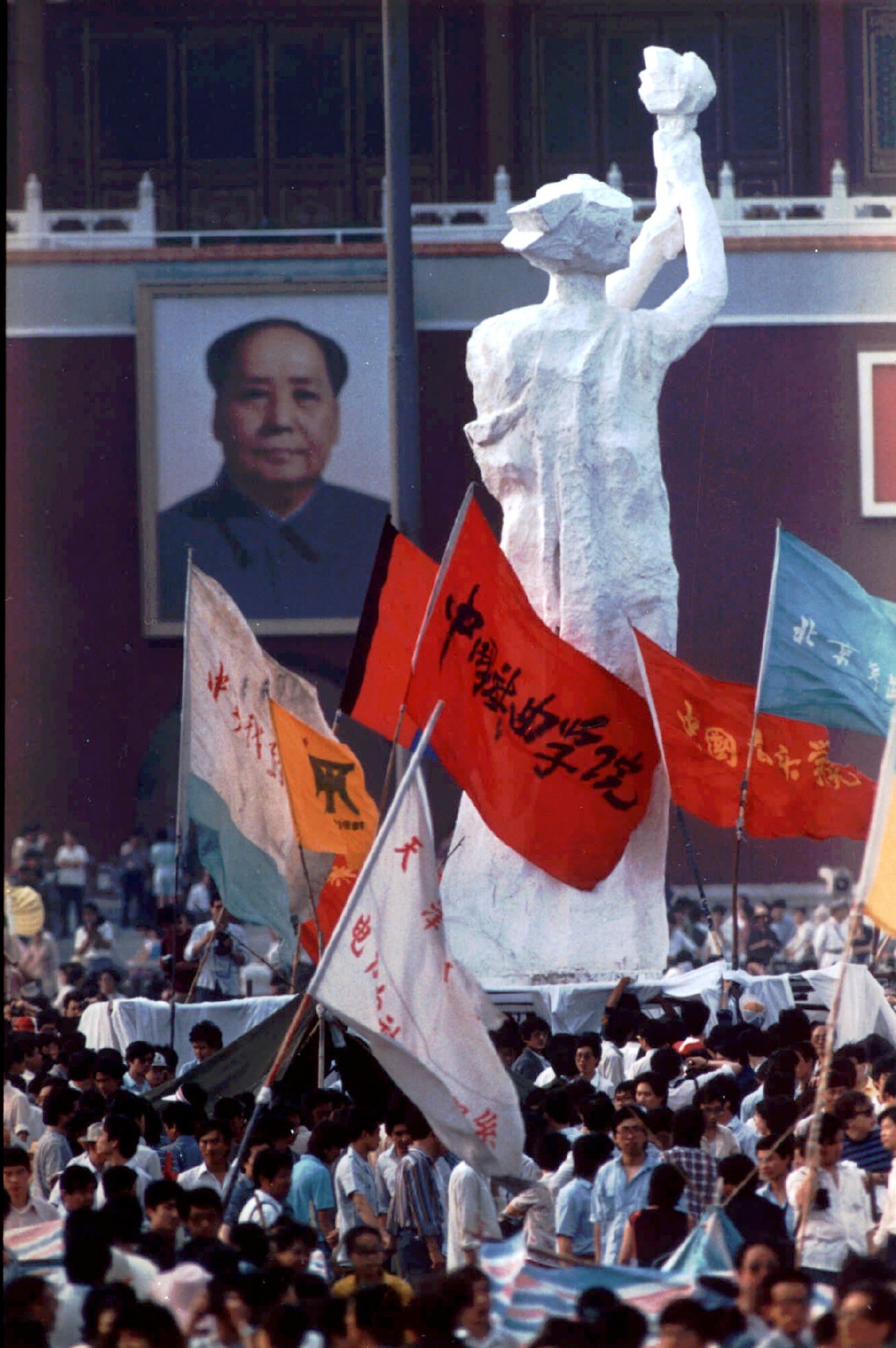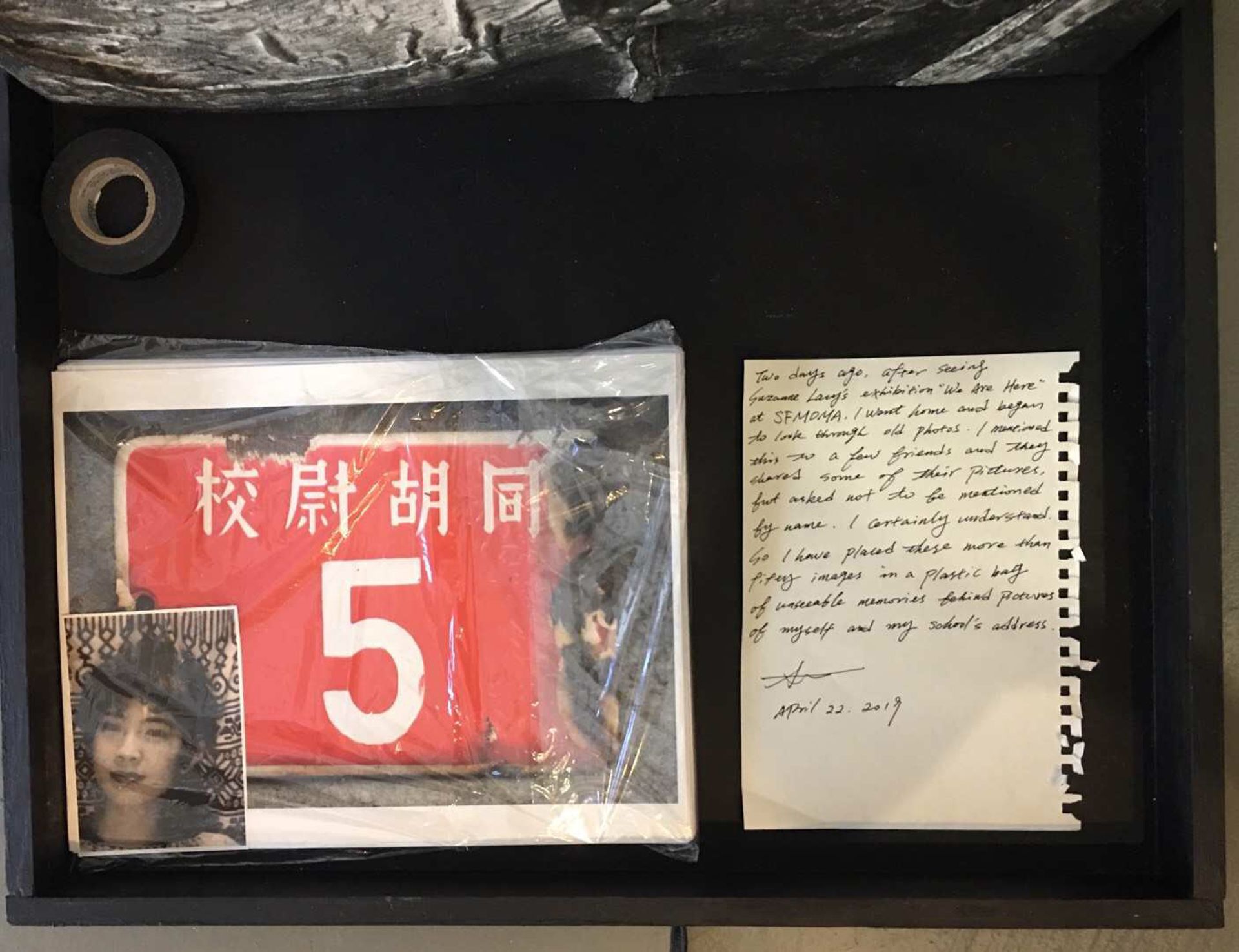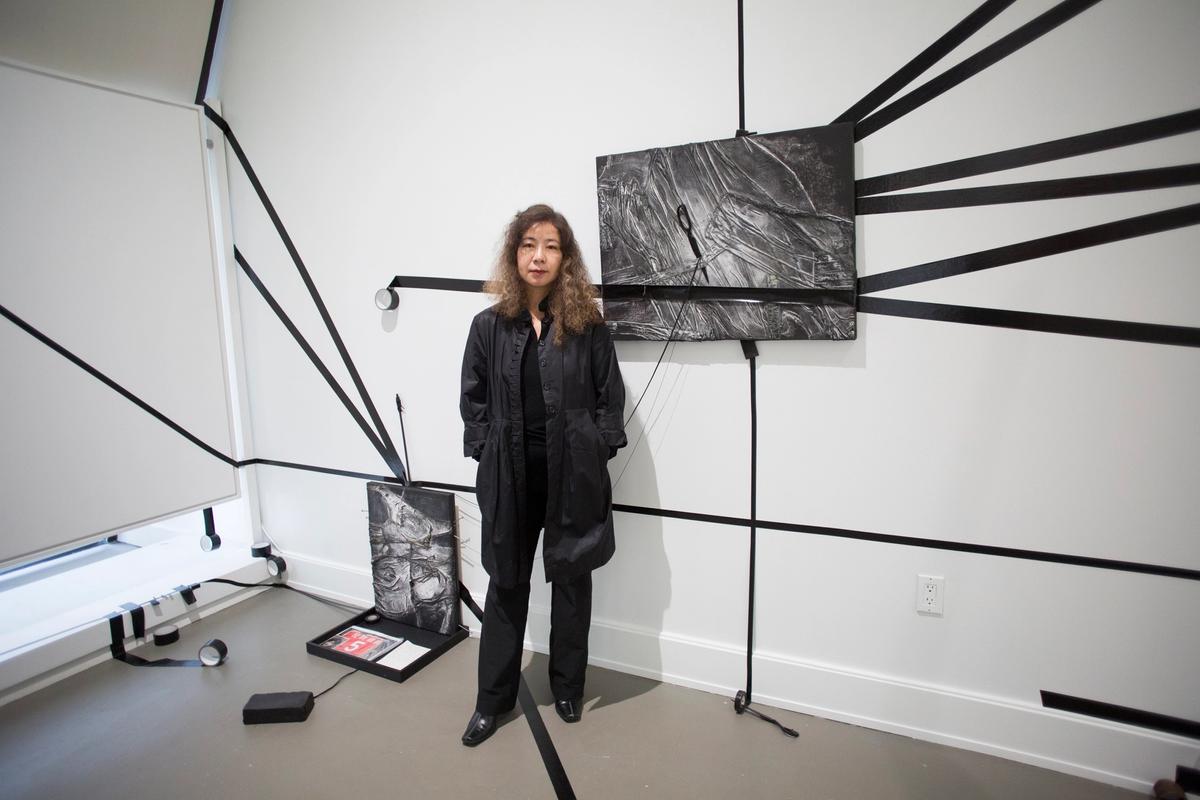Art and politics have become Siamese twins in this era fraught with political turmoil. The Bay Area artist Stella Zhang was a senior at the Central Academy of Fine Arts in Beijing in the late spring of 1989, when she joined fellow students demonstrating for democracy and freedom of expression in Tiananmen Square. Her classmates in the sculpture department famously created the ten-meter-tall Goddess of Liberty statue (also called the Goddess of Democracy by Western media), which became an icon of the movement. In the early morning of 4 June, government troops and tanks moved in to disperse the demonstrators; Zhang had returned to school, at that time not far away. “Around midnight we heard shots,” she recalls.
Since then the Chinese government has banned any public mention of what is called the Tiananmen Square Massacre, and in the lead-up to its 30th anniversary this year, police have detained or threatened dozens of activists. Zhang says that she recently received an anonymous message on her WeChat account, after posting about her project, that read something to the effect of: “We know that you have an artwork being shown in San Francisco. We hope you will consider the good of the country and your own safety.” Although the threat immediately disappeared, “it generated a nameless invisible fear,” Zhang says.
After graduation, Zhang left for Japan and then the US. However, she will never forget those days, and hopes that others will remember, also, through a piece of art she has included as part of the group exhibition Present Tense 2019: Task of Remembrance (through 21 December) at the Chinese Cultural Center of San Francisco. Zhang’s installation Sealed Memory (2019) takes up one wall, and consists of two blackened panels taped to the wall by long strips of black tape, with a box below containing images collected from her friends and fellow students. The show addresses other historic political upheavals as well, such as the fall of the Berlin Wall and the 2016 US Presidential election. Zhang spoke with us about the work and her experience at Tiananmen by phone.
The Art Newspaper: The work you’ve made for this exhibition refers to 4 June. When you were a student at CAFA. What year were you in?
Stella Zhang: That was my graduation year. Usually we would have a graduation exhibition, but we didn’t that year because of Tiananmen, it was chaos.
You went to Tiananmen Square several times. Didn’t the CAFA students build the Goddess of Liberty? Did you know students who worked on it?
Many of us went the day they set up the Goddess of Liberty. The basic form was made of foam, then finished on site.

A statue dubbed The Goddess of Democracy made by students from the Central Academy of Fine Arts faces off against a portrait of Mao Zedong in Beijing's Tiananmen Square, on 30 May 1989 © AP Photo/Jeff Widener
What happened to it?
On 4 June, they pushed the sculpture down. At midnight we heard gunshots. We went to the gates of the school to see what was going on. There’s a hospital nearby, and we saw many bloodied people brought to the hospital by car and by bicycle. It was frightening, I was shaking. My memory will never be gone, but in China they’ve banned any mention of this event. Not even 30 years later. Even when I asked friends for these materials [for the work Sealed Memory], they were frightened. So I’ve sealed up the photographs they sent me.
The installation has two blacked canvases taped onto the wall, what are they made of?
They’re two pieces of clothing I made myself in 1989. At that time you couldn’t buy things you wanted, especially if you wanted something in a unique style. I made these clothes and wore them to Tiananmen Square. I kept them all these years, and now I think it’s the perfect time to put my memory on canvas. The memory is there, but it’s been blocked.
And on the floor, beneath the panels?
In a black box, I have a plastic bag, with more than 50 images. I asked friends to send me their photographs from that year, some from our school, some from Tiananmen. They were nervous about what’s happening in China, so I promised them no one else would see them. There’s a photo of me on top of the box, from that year. As an artist you have to understand your role, you have a responsibility to say something true and honest.

Stella Zhang's installation Sealed Memory (2019) includes pictures from her and her friends, who were seniors at the Central Academy of Fine Arts in Beijing during the student-led protests Courtesy of the artist


